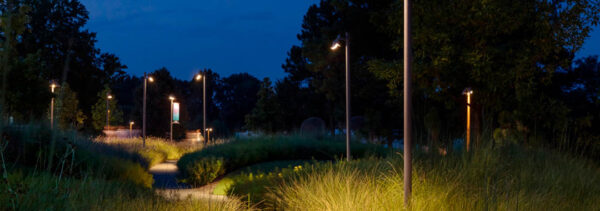The changes introduced by the New Lighting Standard to sustainable construction


Posteado
Cielos Chile
schedule Thursday 21 de December
The new regulation redefines lighting standards across the country, introducing new sustainability criteria for the construction industry.
Construction is one of the industries with the greatest environmental impact. Globally, it accounts for 39% of CO2 emissions, while in Chile it is responsible for 35% of all solid waste. In response, the industry has focused its efforts on transforming its processes and creating works with a lower environmental impact.
To achieve this, priority has been given to the development of products from recycled materials, the adoption of renewable energies in construction and projects, and the optimization of water resources. However, an essential element that has gone unnoticed in sustainable construction criteria has been light pollution.
Miguel Mora, general manager of Cipycs, a consulting company in sustainable construction, operation, retrofitting, and deconstruction, identified this absence. “Currently, when talking about sustainable construction, light pollution is not taken into account. That’s the important point, one should consider all the small impacts that the new work may have, both in construction and operation,” he commented.
Mora emphasizes the importance of understanding the project’s context and identifying all stakeholders when talking about sustainability, including the environment and nearby communities. “Thinking about the northern area, for example, not considering light pollution results in losing a world heritage like the observation skies,” he added.
Daniela González, executive director of the Cielos de Chile Foundation, highlights that the New Lighting Standard –which will cover the entire national territory– takes an important step in starting to address this issue. “The new standard begins to promote the need for construction projects to be designed in an environmentally friendly way, mitigating the effects of light pollution on biodiversity and people,” she explained.
The law, which will be in effect from October 2024, seeks to control emissions from outdoor lighting to prevent artificial light pollution. In the field of sustainable construction, the new regulation covers industrial lighting and ornamental and decorative lighting, setting limits on emissions and restrictions on the use of certain colors.
In the case of industrial lighting, limitations are set on the amount of light and the orientation of the luminaires. As for ornamental lighting, light emission is further restricted, a shutdown is imposed during specific hours, and blue light emission is regulated, especially in the Special Protection Areas established by law.
“We call on institutions and the private sector to inform themselves about this new regulation that will come into effect next year. The law does not seek to eliminate lighting, but to improve the ways in which it is done, to have buildings that respect their surroundings, especially in special protection areas for the care of biodiversity, endangered species, and astronomical observation areas,” concluded González.

Subscribe to our newsletter
Receive relevant information about the skies of Chile every month
